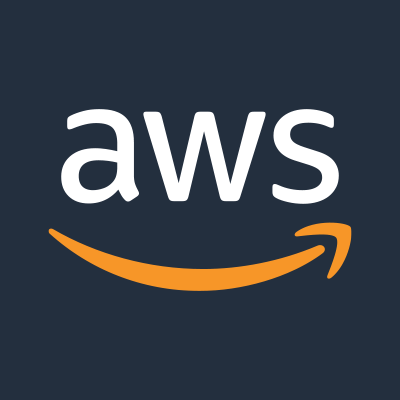AWS Announces Four New Container Capabilities

SEATTLE–(BUSINESS WIRE)–Dec. 1, 2020– Today at AWS re:Invent, Amazon Web Services, Inc. (AWS), an Amazon.com company (NASDAQ: AMZN), announced four new container innovations to help customers develop, deploy, and scale modern applications. Containers provide a standard way for developers to package and run applications quickly and reliably in any environment, while also improving resource utilization and reducing cost. AWS is now making it even easier to provision, deploy, and manage container applications. It is doing this by enabling customers to run Amazon Elastic Container Service (ECS) or Amazon Elastic Kubernetes Service (EKS) in their own data centers, adding a new service for automated container and serverless application development and deployment, and providing a new container registry that gives developers an easy and highly available way to share and deploy container software publicly.
Most companies offer customers a single managed Kubernetes container offering. This is limiting because different developers prioritize different needs. For developers who most prioritize using the open source Kubernetes orchestration engine, AWS offers Amazon EKS. For developers who most prioritize the deepest integration with the rest of AWS and the comfort of AWS-style APIs and streamlined configurations for cluster management, scheduling, and monitoring, AWS offers Amazon ECS. And, for those customers who prefer to run containers without having to think about servers or clusters at all (i.e. serverless), AWS offers AWS Fargate. No other provider has either a serverless container offering or this selection of container offerings overall to meet the diverse needs of developers. All three of these services continue to grow at a rapid rate, and often, customers use all three container services at the same time for different workloads.
Amazon ECS Anywhere and Amazon EKS Anywhere enable customers to run Amazon ECS and Amazon EKS in their own data centers
Today, customers that want to run their applications in containers have to deal with different deployment and management processes for on-premises applications and cloud applications. In these cases, customers have to manually install, operate, and manage container orchestration software on-premises. Because these customers have to use disparate tooling across their AWS and on-premises environments, they also have to stay current with multiple specialized knowledge domains and skillsets. This situation not only leads to operational overhead, but it also slows down the pace of delivering new business capabilities. What customers want instead is a fully-managed solution that works in their own data centers and in AWS with the same monitoring, cluster management, and deployment pipelines they use in Amazon ECS and Amazon EKS today.
- Amazon ECS Anywhere gives customers the ability to run Amazon ECS in their own data centers using the same cloud-based, fully-managed, and highly-scalable container orchestration service they use in AWS today. Amazon ECS Anywhere provides customers with consistent tooling and APIs for all container-based applications, and the same Amazon ECS experience for cluster management, workload scheduling, and monitoring both in the cloud and in their own data centers. With Amazon ECS Anywhere, customers no longer need to run, update, or maintain their own container orchestrators on-premises, making it easier to move their containers to the cloud and manage their hybrid environment. Amazon ECS Anywhere will be available in the first half of 2021. To learn more, visit https://aws.amazon.com/ecs
- With Amazon EKS Anywhere, customers can now run Kubernetes in their own data centers and in the cloud using the same consistent Amazon EKS experience. Amazon EKS Anywhere works on any infrastructure (bare metal, VMware vSphere, or cloud virtual machines) and provides customers with consistent Kubernetes management tooling optimized to simplify cluster installation with default configurations for OS, container registry, logging, monitoring, networking, and storage. Amazon EKS Anywhere uses Amazon EKS Distro, the same Kubernetes distribution deployed by Amazon EKS, allowing customers to easily create clusters consistent with Amazon EKS best practices like the latest software updates and extended security patches. Amazon EKS Anywhere eliminates the fragmented collection of vendor support agreements and tools required to install and operate Kubernetes clusters on-premises. Amazon EKS Anywhere will be available in the first half of 2021. To learn more, visit aws.amazon.com/eks/eks-anywhere
AWS Proton provides developers with a new service to automate container and serverless application development and deployment
Container and serverless applications provide obvious operational benefits, but they also change the way customers develop and deploy their code. Today, when developers build traditional applications on Amazon EC2 instances, the applications are often built as a single block of code, and there are well-established tools that help them develop and deploy their code like AWS CloudFormation templates (to provision the infrastructure), AWS CodePipeline (to set up the CI/CD process), and Amazon CloudWatch (to monitor the deployments). In reality, once customers get an application up and running on EC2, the components of the application don’t change very much. Typically, the code is maintained in a single release, so keeping it coordinated is relatively easy. By contrast, container and serverless applications are assembled from smaller chunks of code that are often developed and maintained independently and then stitched together to build and scale an application. Each chunk of code has its own separate infrastructure that has to be updated and maintained. Often, these smaller pieces of code are developed and operated by different teams, so those teams have the freedom to update the components at their own pace. This results in changes happening more frequently than with traditional applications. As customers have naturally gravitated to container and serverless application development, they’ve also found that trying to coordinate all of the changes across their infrastructure provisioning, code deployments, and monitoring tools can be a challenge. Customers lack an integrated solution that ties together all the tasks, including resource provisioning, code deployments, and monitoring. Central infrastructure teams try to provide guidance to the developers, and some even have built their own custom tools to help developers implement best practices, but the intricacies of container and serverless application development and deployment remain a challenge that slows down application development at many organizations.
AWS Proton is a new application management service that makes it radically simpler to provision, deploy, and monitor applications when the unit of compute is small and dynamic, like with container and serverless. AWS Proton allows customers to define application components as “stacks” (i.e. the different combinations of chunks of code used in an application). AWS Proton also comes with a set of curated application stacks with built-in AWS best practices (for security, architecture, and tools), allowing infrastructure teams to distribute trusted stacks to development teams quickly and easily. AWS Proton enables infrastructure teams to make the stacks available to development teams for different use cases, and ensures that the stacks stay standardized and up-to-date even as multiple teams deploy stacks simultaneously. AWS Proton gives developers the ability to store and reuse these application stacks, provides an environment to deploy container and serverless applications, monitors the applications in production, and automatically updates the applications with the latest components of the stacks. AWS Proton automates the deployment of infrastructure as code, CI/CD pipelines, and monitoring for container and serverless applications. With AWS Proton, Infrastructure teams can empower their developers to use serverless and container technologies in a consistent way for their applications without having to worry about manually managing the application’s development process. AWS Proton is available in preview today. To get started with AWS Proton, visit aws.amazon.com/proton
Amazon Elastic Container Registry (ECR) Public allows developers to share and deploy container software publicly
Most developers building container-based applications leverage common software packages (e.g. operating systems, databases, and application components) that are publicly distributed as container images. Developers manage their container images privately within their organization using container registry services like Amazon ECR. Today, Amazon ECR customers download over three billion images each week, enabling developers to deploy containers for use in their own applications. However, when developers want to publish popular software as images publicly (e.g. language libraries, web servers, databases, etc.), they can’t download it from Amazon ECR today. Instead, they must download these images from public websites and registries like Docker Hub, which limits the image pull rate under their anonymous and free plans and does not offer availability commitments. This results in inefficient and unreliable software delivery. To work around this dependency, developers are forced to duplicate and manage these common images locally. This makes it difficult to stay in sync with the latest versions of the images, adds operational complexity, and limits the ability to scale applications quickly. AWS customers who run containers from public images in multiple regions (to log events or manage network policies) face additional difficulties in getting images to download quickly and reliably, because they have to replicate their local image copy to each region.
To solve this challenge, Amazon ECR has now added a public registry for developers to store, manage, share, and deploy container images for anyone to discover and download. Customers can use Amazon ECR Public to host both their private and public container images, eliminating the need to use public websites and registries. Customers no longer need to operate their own container repositories or worry about scaling the underlying infrastructure and can quickly publish public container images with a single command. These images are geo-replicated for reliable availability around the world and offer faster downloads to quickly serve up images on-demand. Amazon ECR Public provides a highly available service that customers can use to distribute public container images as well as related files like policy configurations for use by any developer. Additionally, a new website called Amazon ECR Public Gallery will allow anyone to browse and search for public container images, view developer-provided details, and see pull commands – all without needing to sign in to AWS. Amazon ECR Public will also notify customers when a new release of a public image becomes available. Amazon ECR Public is available today. To learn more about Amazon ECR Public, visit aws.amazon.com/ecr
“Customers want to run their workloads in containers for greater portability, more efficient resource utilization, and lower costs, but even with these significant advantages, customers have asked AWS to make containers easier to manage, deploy, and share,” said Deepak Singh, VP of Compute Services, AWS. “The innovations announced today further expand AWS’s leading container functionality by giving customers a consistent Amazon ECS and Amazon EKS experience in the cloud and in their own data centers, making it radically simpler to develop and deploy container and serverless applications, and providing a fully managed public container registry to more easily store, manage, and share container images.”
The Volkswagen Group manufactures 12 of the world’s most iconic automotive brands, including Volkswagen passenger cars, Audi, Bentley, Bugatti, Lamborghini, Porsche, and Ducati motorcycles. The group also includes TRATON, a leading manufacturer of light-duty commercial vehicles, trucks, and buses. “We need our Software Development teams to solve business problems without worrying too much about infrastructure architecture and compliance,” said Peter Garzarella, Head of Group Software Development, Volkswagen AG. “AWS Proton enables us to provide compliant, easily consumable, and evolvable cloud infrastructure to our teams at the press of a button.”
BuzzFeed is the world’s leading independent digital media company, which leverages data and innovation to reach hundreds of millions of people globally. “Rig, our deployment platform, helps us manage a microservice ecosystem of over 600 apps including HTTP APIs & User Interfaces, queue readers, one-off jobs, and more,” said Clément Huyghebaert, Director of Engineering, BuzzFeed. “It is critical for us to ensure that development teams can quickly get the infrastructure they need while meeting our architectural standards and not having to slow down. We’re excited to explore AWS Proton’s feature set and see how it can help BuzzFeed provide an even smoother developer experience.”
SmugMug + Flickr is the world’s largest and most influential photographer-centric platform. “We constantly spin up new services, and need to keep track of what is running in our infrastructure, including what is still in use and what has to be upgraded,” said Shane Meyers, Principal Architect, SmugMug. “Today, our infrastructure team is involved in provisioning infrastructure for all projects and monitoring the services in use. We are looking forward to using AWS Proton, which will free up our developers to move fast while we keep all infrastructure updated to the latest standards.”
Canonical is the publisher of Ubuntu, the OS for most public cloud workloads as well as IoT, smart devices, self-driving cars, and advanced robots. “With enterprises increasingly adopting open source applications across their cloud infrastructure, they are facing more security issues,” said Mark Lewis, VP of Application Services, Canonical. “While discovering vulnerabilities in container images is easier than ever, fixing them requires an ever increasing set of specialized skills and infrastructure. The Canonical LTS Docker image portfolio on Amazon ECR Public provides compliant, secure images for a growing range of applications, with a long term maintenance commitment that enterprises can rely on.”
Wish is a leading mobile-shopping app that sells a huge variety of affordable products to shoppers around the world. “We run most of our customer-facing apps on Kubernetes clusters in AWS, and use public containers for application builds and standalone add ons,” said Tomas Virgl, Tech Lead, Core Infrastructure, Wish. “We pull our container images from Amazon ECR and are delighted with its uptime, as well as breadth of its features such as security scanning, multi-arch support, and ease of use. Amazon ECR Public will now let us leverage the same great features for public container images. It simplifies our registry tooling in hybrid environments and increases our confidence when apps build from a parent public image, or when we pull a public image to run.”
About Amazon Web Services
For 14 years, Amazon Web Services has been the world’s most comprehensive and broadly adopted cloud platform. AWS offers over 175 fully featured services for compute, storage, databases, networking, analytics, robotics, machine learning and artificial intelligence (AI), Internet of Things (IoT), mobile, security, hybrid, virtual and augmented reality (VR and AR), media, and application development, deployment, and management from 77 Availability Zones (AZs) within 24 geographic regions, with announced plans for 15 more Availability Zones and five more AWS Regions in India, Indonesia, Japan, Spain, and Switzerland. Millions of customers—including the fastest-growing startups, largest enterprises, and leading government agencies—trust AWS to power their infrastructure, become more agile, and lower costs. To learn more about AWS, visit aws.amazon.com
About Amazon
Amazon is guided by four principles: customer obsession rather than competitor focus, passion for invention, commitment to operational excellence, and long-term thinking. Customer reviews, 1-Click shopping, personalized recommendations, Prime, Fulfillment by Amazon, AWS, Kindle Direct Publishing, Kindle, Fire tablets, Fire TV, Amazon Echo, and Alexa are some of the products and services pioneered by Amazon. For more information, visit amazon.com/about and follow @AmazonNews





